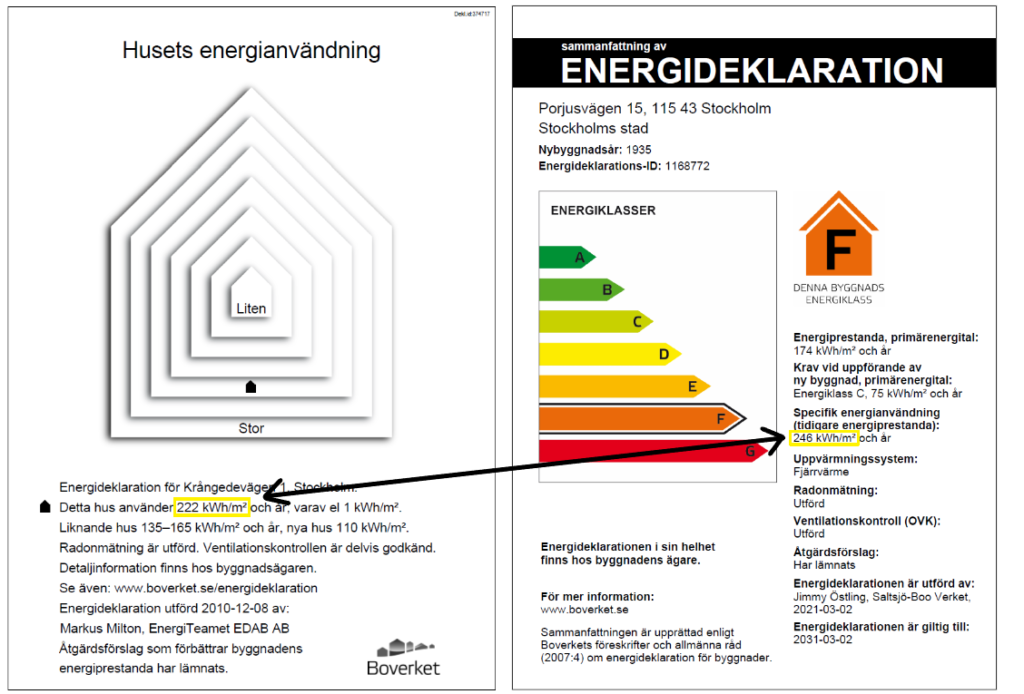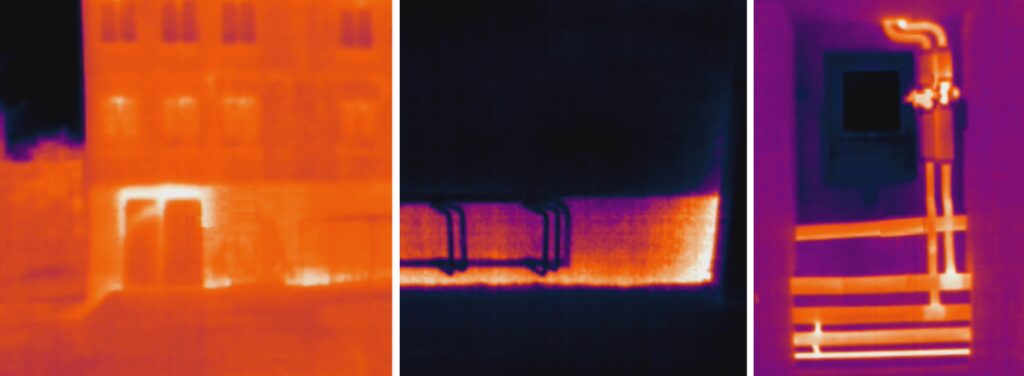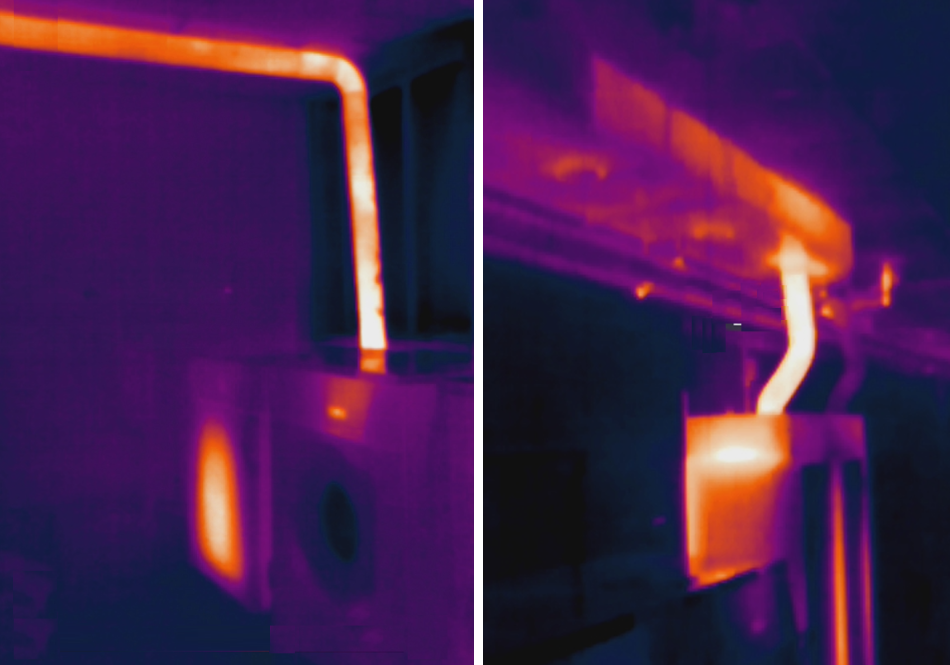This page uses energy data from Brf. Hjorthagshus. The association has a high energy use, among the highest in Sweden. The high energy use results in large climate impact and in unfortunate high monthly bills. On top of carbon dioxide emissions from the district heating, the stove gas, which is fossil methane gas with a strong climate impact, must be added. The stove gas is also by far the most expensive energy available with a price of 8 – 10 SEK/kWh. It’s an energy form which gives the association higher insurance costs and increased risk of fire.

The energy declaration on the left is from 2010. At that time, our buildings used 222 kWh/m2/year. The energy declaration to the right was issued in 2021, about ten years later, and shows that the energy use had increased to 246 kWh/m2/year even though the Stockholm climate has become considerably warmer.
An energy use of 246 kWh/m2/year means that Hjorthagshus has among the largest energy losses in Sweden. However, the association doesn’t need to buy any energy at all. The sun’s heat and radiation energy is enough for the association’s energy needs for heating, building electricity and household electricity. There will probably be a surplus of electricity which can be sold to electrical vehicles via charging poles. Modern technology for seasonal storage of electricity and heat energy enables storage of solar energy from bright summer months to the dark winter period.
Before acquiring equipment for capturing solar energy, the buildings’ energy losses should be reduced as much as possible and heat recovery installed. The picture below shows a schematical method which is the best approach. It reflects the so called Kyoto Pyramid. The Kyoto pyramid principle was formulated by the Norwegian research institute Sintef and has since been refined in Sweden into an economic model.

Below thermal images show how our association’s buildings lose heat energy. The bright parts show the heat losses – heat leaving to the atmosphere at high cost for the association.



The heat leakages revealed by the thermal images can largely be avoided by sealing the buildings’ envelope. The bottom two pictures show old-style dryers in the laundry room using the evacuation principle. The dryers unnecessarily use large amounts of electricity and send air out of the association’s buildings. The leaving air is heated with district heating energy at high cost.
In addition, heat losses via the sewages should be lowered; normally, these heat losses can be reduced by 30 – 40 percent. After reduction of various heat energy losses, heat can be recovered. This recycling can done an infinite number of times because heat energy cannot be consumed (the first law of thermodynamics). The picture below shows a heat recovery unit for returning thermal energy in the air before it leaves the building; the best units return roughly 80 percent of the heat to the building.

Once energy losses have been reduced and heat recovery installed, our buildings will need approximately 35 percent of today’s heat energy use. For a heat pump to deliver this heat energy, it needs approximately 10 percent electrical energy of the association’s initial total energy use.

Above a large heat pump suitable for the association. It delivers 60 kW heat power and has a purchasing price of approximately 300 000 crowns; there will be additional costs for engineering work, pipes and boreholes.
The association today uses 246 kWh/m2/year. Reduction of heat losses has first lowered the energy use to around 150 kWh/m2/year, after that heat recovery as brought it down to 88 kWh/m2/year. For a heat pump to provide 88 kWh/m2/year, approximately 25 kWh/m2/year electricity is required. The association can get this electricity from the it’s own roofs. The association has 15,600 m2 of heated surface, which means that the electricity required for heating will be approximately 390 MWh/year.

The association’s roof can deliver 950 – 1,050 MWh/year. The estimated surplus 560 MWh/year goes to household electricity (that is, sold to members) and for building electricity (laundry rooms, circulation pumps and lighting). A surplus occurs. This can be sold to charging poles providing energy for members’ electrical vehicles or for electrical vehicles from the neighbourhood or visitors to nearby companies.
In the English-speaking world, comprehensive energy efficiency programs for existing buildings are often referred to as Deep Energy Retrofit (DER). The concept of doing all available measures to reduce purchased energy is a great opportunity for our association to improve finances and reduce climate impact.
In Falun, Sweden, the condominium association Promenaden has reduced its energy purchases by 90 percent and greatly reduced its costs. Below is a film about the association’s work with reduced energy use.